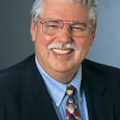E-mail recently delivered a message advocating use of "financial astrology" to predict "with 70-90% accuracy" prices of oil, gold, corporate stocks, or the exchange rate for the euro vs. the dollar. Apparently a perceptive reading of astrological signs can reveal the exact moments to enter the market and to sell and take one's profit, all within 1-24 hr.
Perhaps the sender has already made his fortune from astrological readings and is selling his secrets to other investors, like those late-night television infomercials by real estate speculators peddling get-rich-quick plans. However, most market experts say such short-term turnovers are a quick way for amateur investors to lose their assets. The scary thing is people are doling out their hard-earned cash based on phases of the moon, zodiac signs, and similar hoodoo. One could do as well using a dart board to pick investments.
A career of reporting kneejerk price fluctuations in futures and cash markets for oil and gas long ago convinced this reporter of the old adage about fools and their money. But financial astrology plumbs the depth of my skepticism, down there with e-mails from widows of African officials who want to share their husbands' fortunes if I forward my bank account number.
Not that I'm above writing about such things. The mass media where I spent most of my career is a primary purveyor of popular superstition through frequent reports of UFOs, crop circles, New Year predictions, and columns by psychics and other soothsayers, not to mention daily horoscopes that describe all of us as fun-loving extroverts who also value our privacy.
Reporting superstition
I've contributed my share of such foolishness. Back in the hard days of the 1980s, I wrote about a desperate producer who hired a dowser to explore for oil with a divining rod. To no one's surprise, he didn't find a thing.
Then there was the international oil company that implemented biorhythms into its safety program for offshore operations in the Gulf of Mexico. A hot fad in the 1970s, biorhythms are nothing more than a 20th Century update of the age-old numerology superstition. It is based on the assumption humans have inner calendars that include a 23-day physical cycle, at the peak of which they are more coordinated with an enhanced feeling of well-being; a 28-day emotional cycle with a peak in perception and awareness; and a 33-day intellectual cycle, in which alertness, logic, and analysis culminate.
The theory was that a worker's performance and safety were at the maximum when the peaks of those cycles were in sync, whereas accidents were more likely when a person's cycles were out of kilter. Of course, statistics revealed most accidents involved inexperienced new-hires who flocked to the oil and gas industry during the 1970s boom. Safety improved when the boom went bust in the 1980s and those workers were laid off. The workers who were left had fewer accidents not because their cycles were better but because they were more experienced.
The most fun I ever had with a superstition-based feature, however, was prior to what promised to be a ho-hum meeting of the Organization of Petroleum Exporting Countries in 1986. With no real issues to write about, I decided to do a feature involving Saudi Oil Minister Sheik Ahmed Zaki Yamani's fabled belief in astrology and got a professional astrologer to do a simple reading of what he and other oil ministers were apt to do based on their birth signs. I told the astrologer up front I didn't believe in that stuff. "Of course you don't," she replied. "You're an Aries-they don't believe in anything."
The feature produced a few smiles but no real news. The most interesting thing from the astrologer's readings was her prediction it would be a "difficult" year for Yamani. A few months later King Fahd abruptly dismissed the long-time oil minister.
More Oil & Gas Journal Current Issue Articles
More Oil & Gas Journal Archives Issue Articles
View Oil and Gas Articles on PennEnergy.com
About the Author

Sam Fletcher
Senior Writer
I'm third-generation blue-collar oil field worker, born in the great East Texas Field and completed high school in the Permian Basin of West Texas where I spent a couple of summers hustling jugs and loading shot holes on seismic crews. My family was oil field trash back when it was an insult instead of a brag on a bumper sticker. I enlisted in the US Army in 1961-1964 looking for a way out of a life of stoop-labor in the oil patch. I didn't succeed then, but a few years later when they passed a new GI Bill for Vietnam veterans, they backdated it to cover my period of enlistment and finally gave me the means to attend college. I'd wanted a career in journalism since my junior year in high school when I was editor of the school newspaper. I financed my college education with the GI bill, parttime work, and a few scholarships and earned a bachelor's degree and later a master's degree in mass communication at Texas Tech University. I worked some years on Texas daily newspapers and even taught journalism a couple of semesters at a junior college in San Antonio before joining the metropolitan Houston Post in 1973. In 1977 I became the energy reporter for the paper, primarily because I was the only writer who'd ever broke a sweat in sight of an oil rig. I covered the oil patch through its biggest boom in the 1970s, its worst depression in the 1980s, and its subsequent rise from the ashes as the industry reinvented itself yet again. When the Post folded in 1995, I made the switch to oil industry publications. At the start of the new century, I joined the Oil & Gas Journal, long the "Bible" of the oil industry. I've been writing about the oil and gas industry's successes and setbacks for a long time, and I've loved every minute of it.